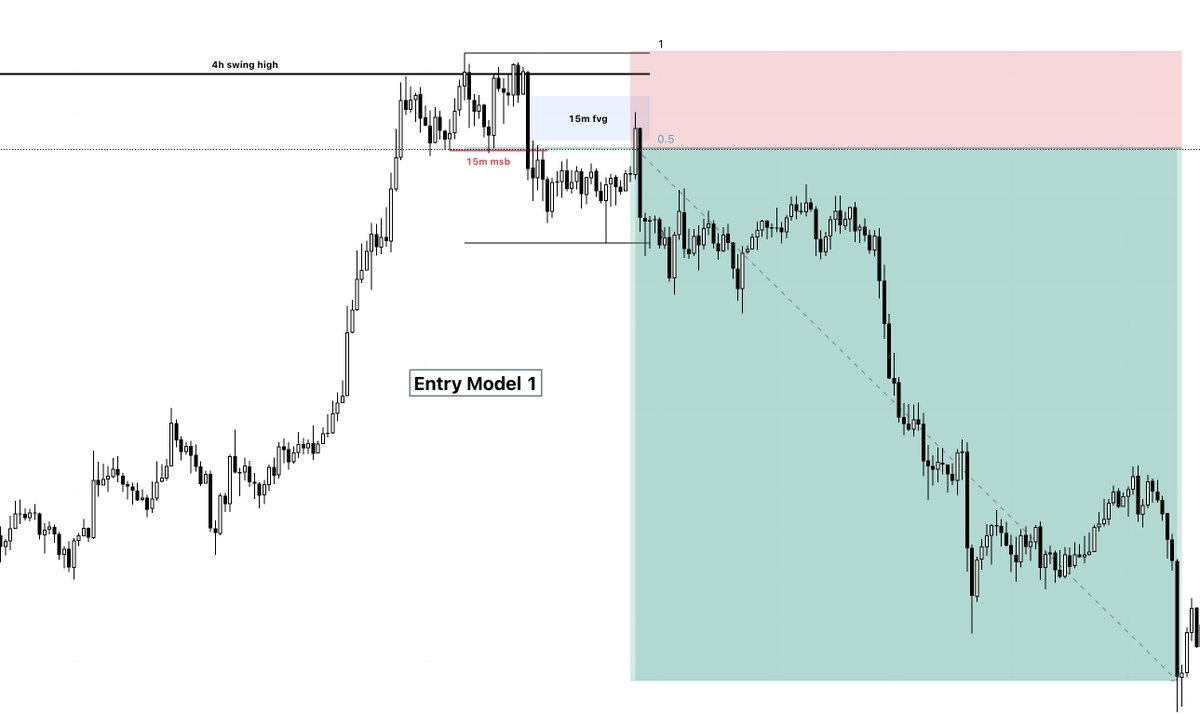✍️ I've organized 250 pages of my notes from ICT's "Premium Mentorship Core Content" series.
🧵 Here are 10 MORE of my favorite "lightbulb moments"
#ICT #innercircletrader #trader #trading #forex #forextrading #forextradingtips
🧵 Here are 10 MORE of my favorite "lightbulb moments"
#ICT #innercircletrader #trader #trading #forex #forextrading #forextradingtips
1) The impact of quarterly cycles in the markets as a whole cannot be overstated. Every three months or so, the markets will tend to form an intermediate term turning point. (ICT Mentorship Core Content - Month 11 - Forex & Currency Mega-Trades)
2) The major forex pairs have futures contracts that can help analysis. There may be something in the price action of the underlying futures that leads to an opportunity. (ICT Mentorship Core Content - Month 11 - Forex & Currency Mega-Trades)
3) London Open is ideal when daily chart is clearly respecting PD Arrays; when the market has recently responded off of a HTF PD Array and hasn't yet met an opposing PD Array; when daily range hasn't recently exceeded its 5 day ADR. (Month 8 - When To Avoid The London Session)
4) The best rules are the ones that help you stay out of the marketplace. (Month 8 - When To Avoid The London Session)
5) As a day trader, generally we're looking for the PDH or PDL to be traded to. Use order flow direction and PD Array matrix for specific bias. (Month 9 - Filling The Numbers)
6) Generally NY Session is a continuation of London, but not always. NY Reversals occur when price eventually trades to a HTF PD Array. London Close Reversals tend to happen on large range days. (Month 9 - Trading Market Reversals)
7) Always be referring to the last 3 days (counting today) and their respective Highs and Lows. A lot of liquidity resting above and below. (Month 9 - Trading Market Reversals)
8) If price is down all week and on Thursday starts trading above Sunday open, we will likely get a reversal. (Month 8 - Essentials To ICT Daytrading)
9) Generally after 3 consecutive daily up closes you'll get a retracement lower (so avoid longs). Opposite for down closes. Unlikely the 4th day will be a large range day. (Month 8 - When To Avoid The London Session)
10) If you think dollar will weaken, look at the relative strength of the foreign currencies, and pick the strongest one to long. (ICT Mentorship Core Content - Month 11 - Forex & Currency Mega-Trades)
This is the 2nd of many threads I'll publish from my Core Content notes. Future topics will cover PD Arrays, SMT, Entry Models, Timeframes, Ranges, and more.
Like 💙 and share this thread to show your support 🤝
Like 💙 and share this thread to show your support 🤝
• • •
Missing some Tweet in this thread? You can try to
force a refresh

 Read on Twitter
Read on Twitter












